
|
You entered: lighthouse
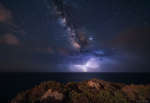 Electric Night
Electric Night
4.12.2019
It may appear, at first, like the Galaxy is producing the lightning, but really it's the Earth. The featured nighttime landscape was taken from a southern tip of the Italian Island of Sardinia in early June.
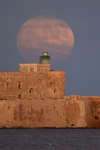 APOD: 2023 September 5 Б Blue Supermoon Beyond Syracuse
APOD: 2023 September 5 Б Blue Supermoon Beyond Syracuse
5.09.2023
The last full moon was doubly unusual. First of all, it was a blue moon. A modern definition of a blue moon is a second full moon to occur during one calendar month. Since there are 13 full moons in 2023, one month has to have two -- and that month was August.
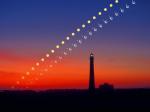 Solar System Rising Over Fire Island
Solar System Rising Over Fire Island
3.05.2005
If you wait long enough, the entire Solar System will rise before you. To see such a sight, however, you will need to look in the direction of the ecliptic. All of the planets and their moons orbit the Sun in nearly the same plane, the ecliptic plane.
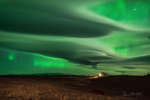 Aurora over Clouds
Aurora over Clouds
24.11.2015
Auroras usually occur high above the clouds. The auroral glow is created when fast-moving particles ejected from the Sun impact the Earth's magnetosphere, from which charged particles spiral along the Earth's magnetic field to strike atoms and molecules high in the Earth's atmosphere.
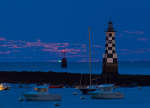 Green Flash and Super Moon
Green Flash and Super Moon
10.05.2012
It was really not about superheroes as on May 6 the much touted Super Moon, the largest Full Moon of 2012, rose over this otherwise peaceful harbor. And no supervillains were present either as boats gently rocked at their moorings near the checkerboard La Perdrix lighthouse on the coast of Brittany, France.
 Aurora over Clouds
Aurora over Clouds
30.05.2021
Auroras usually occur high above the clouds. The auroral glow is created when fast-moving particles ejected from the Sun impact the Earth's magnetosphere, from which charged particles spiral along the Earth's magnetic field to strike atoms and molecules high in the Earth's atmosphere.
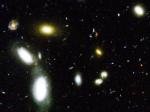 Galaxies in the GOODS
Galaxies in the GOODS
25.06.2003
This tantalizing view of galaxies scattered near and far is part of the Hubble Space Telescope's contribution to the GOODS - the Great Observatories Origins Deep Survey project. The GOODS' goal is to study...
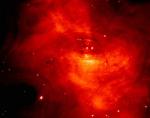 The Pulsar Powered Crab
The Pulsar Powered Crab
2.06.2001
In the Summer of 1054 A.D. Chinese astronomers reported that a star in the constellation of Taurus suddenly became as bright as the full Moon. Fading slowly, it remained visible for over a year.
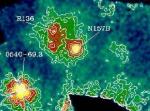 Ultra Fast Pulsar
Ultra Fast Pulsar
11.02.1998
Pulsars are rotating neutron stars, born in the violent crucibles of supernova explosions. Like cosmic lighthouses, beams of radiation from surface hotspots sweep past our viewpoint creating pulses which reveal the rotation rates of these incredibly dense stellar corpses. The most famous pulsar of all is found in the nearby supernova remnant, the Crab Nebula.
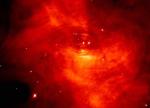 The Pulsar Powered Crab
The Pulsar Powered Crab
5.09.1998
In the Summer of 1054 A.D. Chinese astronomers reported that a star in the constellation of Taurus suddenly became as bright as the full Moon. Fading slowly, it remained visible for over a year.
|
January February March April May June July |
|||||||||||||||||||||||||||||||||||||||||||||||||